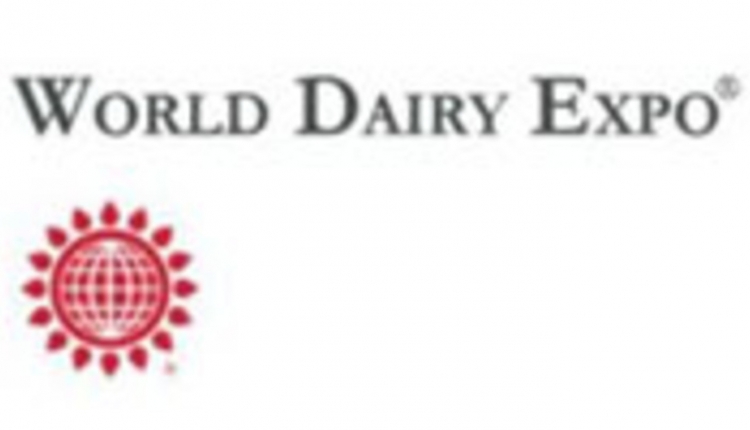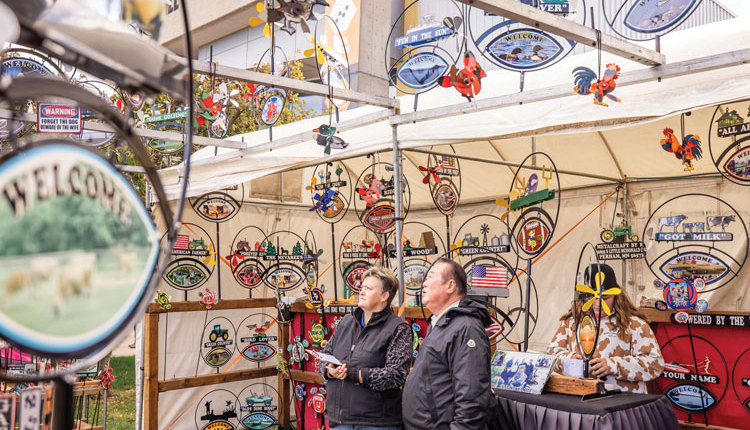The author is a freelance writer based in Union Bridge, Md.
For some individuals, attending Expo has become a long-standing tradition. While the show has evolved over the past five decades, many of the names and faces have remained the same. Here’s a look into the memories of some longtime and well-known attendees.
A New York perspective
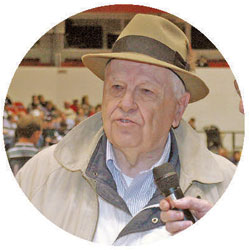
The show (World Dairy Expo) is celebrating 50 years of successful dairy promotions this year, and like a favorite book, many veteran attendees have swept off the dust and cobwebs from the memories.
“Those years of battling the cold in tents is a strong reminder of how well we have it today,” expressed the pedigree reading legend. “Everyone usually comments on how well the show has improved, and it has, from the greater youth participation to the quality of the cattle themselves,” said Backus. “However, the amount of people’s pride in their work has always remained the same, and because of that, the show has evolved into something greater than anyone could have ever imagined.”
Grew with the show
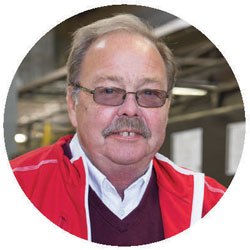
Since 1987, Tom Morris has managed sales at World Dairy Expo. By 1989, Morris took over management of the World Premier Holstein Sale and rebranded it as the World Classic.
As a younger version of himself, Tom Morris helped out with show strings and sale crews. These days, he’s evolved to managing the familiar World Classic Holstein Sale during the week of the show.
“I can recall the generation before me working hard to make a lasting impression at this very show,” he said. “I’ve had the privilege of working alongside some really motivating people. I, too, reflect on the Expo of before when there was a beer garden and food show, exhibitors housed in tents, and the committee that planned this new barn we use today.
“The location in Madison was always a boost for the surrounding city. In a sense, the purpose of the original show was to promote good-quality dairy cattle, which I am more familiar with in my nature of work, but the promotional aspect of it has really branched out to a consumer awareness level,” Morris explained. “The show is the largest-attended, widest visitor-based attraction in the Madison area, including concerts, farmers’ markets, college events, and so forth. It’s hard not to take notice, even if you aren’t from an agriculture background. It’s always been growing, even from the early Waterloo days.”
As the show grows, the need for new, innovative ways of keeping the visitors’ attention has risen, too. “The basic needs for cattle sales are the same,” shared Morris. “Genetics, top sale crews, and buyers.” The World Classic, similar in spectacular nature to the cattle shows, has been an event for Expo attendees to see firsthand.
“We’ve always tried to incorporate some type of ‘wow’ factor for visitors,” chuckled Morris. “We’ve done everything from walking a calf out of a limousine at the beginning of the sale to incorporating the Sheraton across the street.”
A spectator’s sport
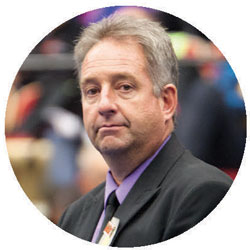
Speaking of spectator awe, there are a few seasoned troops that have graced the colored shavings (see if you can pick them out this year). One individual who stands out in my mind but seems to go unnoticed (which, if he’s doing his job correctly, is good thing) is ringman Bob Hagenow. What started out as a favor for Merle Howard (1954 Klussendorf winner) of just helping out in the ring turned into an annual task for him.
From the show’s infancy, volunteers have stepped forward to keep it interactive for visitors. “The famous colored shavings to the very themes of the displays are captivating,” expressed Hagenow. “So many plants need watering, the grounds need to be maintained each day, pictures are to be taken, and stories written at all hours are just a few of the things that go unnoticed.”
Hagenow’s job has been fulfilling. Not only has he been a ringman for some of the most influential judges who have sorted through numerous cattle, but he also serves as a nonverbal translator for international showmen, a welcoming face to exhibitors and a trade show representative. All the while, he was also working his real job at the Vita Plus booth. “The show has always been a means for industry men and women to come together full circle. Volunteering makes the one-on-one interaction quite natural,” he explained.
From the very beginning, cattle shows have always been a spectator’s sport, and for Hagenow, he’s had the very best front-row seat. “When ‘custom leading’ began to grow in popularity, Barclay Phoenix had been one of several leadspeople who got tapped to present cattle in the ring. He agreed it’s been a running joke for him to have his fair share of ‘big attitude’ animals to show,” chuckled Hagenow.
“He led one that was ‘downright rude’ to him in that it would lunge and butt at his every move, almost catching him where it counts several times! However, being the professional Phoenix is, he guided these animals to their proper spot, showing them for their respective owners to the best of his ability, many of which won their classes,” he said.
“Almost without exception, every judge I’ve had the honor to work with in the past 25 years of any breed has mentioned just how amazing the quality of the dairy show is and how well prepared the animals come into the ring,” he said. “They also usually mention how different the animals look from the center of the ring versus the sidelines. I know many judges have been physically and mentally exhausted when I take the microphone back from them at the completion of their shows, due to them taking the honor and responsibility very seriously. That is something I believe has never and will never change throughout the lifetime of Expo.”
Judging contest changes
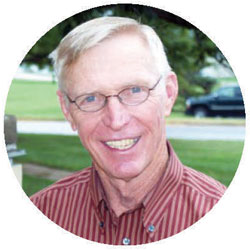
The tip of the iceberg will always just be grazed when talking about the countless volunteers and their tasks mentioned. Behind the scenes is where these people can be found. Before the actual cattle shows even begin, many personnel are on hand to ensure a fulfilling youth participation experience.
“The judging teams that come to participate in the national contests are a long-standing tradition. I’ve certainly been attending the 4-H contest for quite some time,” chuckled University of Missouri Extension representative Rex Ricketts. “A fire that destroyed the prior location is what actually moved the contests to Wisconsin.”
As many can testify, the new barns are much easier to navigate. “The current barn setup is ideal for smoother class transitioning during the contests,” said Ricketts. “I remember having different tagging systems and ways to ensure animals got into the ring. These barns are definitely easier to navigate.”
Ricketts mentioned that with all of the things that have changed throughout the years, from coaches, superintendents, barns, and cattle, there’s one recipe for success.
“You can be reassured that the constant factor in all of this is the crew’s ability to work together and maintain flexibility to cover any challenges that come along. Having a group of people who can work together is important, and I feel it makes the contest better each year,” he said.
Expo definitely holds a place in people’s minds and hearts as a piece of important history for them at some point in their lives. You don’t have to be one of the veterans to share in that, but it sure is fun to listen to their stories!

